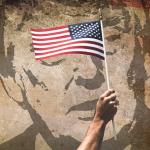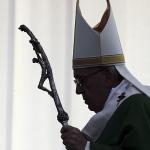Just twenty years ago, my daughter Jana urged me to respond to a list of questions she had about God, how to live, sex, and other puzzles of life. As we wrote back and forth for nearly a year, she questioned my replies, and I kept trying again. From this filial exchange, Pocket Books published a volume called Tell Me Why, picked up by another publisher in the United Kingdom. Of all my writings, that book gave me the most personal joy to write.
Recently my very first granddaughter, Emily, fresh upon getting her degree in creative writing from the University of Iowa, has now asked me another series of questions. We think of it as Tell Me Why 2.0
It would be difficult to explain how much I love Emily – her first name is Emily, but ever since college days she has come to prefer her second name, her grandmother’s family name, Alston. Here is how our love began.
* * *
I was hoping in August 1993 that Emily would be born as predicted on August 2nd, the birthday of my dear brother Dick, who had died as a missionary in what was then Dacca, East Pakistan (today, Bangladesh) in 1964. Dick’s life had been cut short by a knife attack during Muslim riots against Hindus.[1]
As it turned out, Emily’s actual birth occurred on August 3rd, the day after what would have been Dick’s 58th birthday. Fortunately my wife, Karen, was in the birthing room (prudently she had sent me to the waiting room, knowing that I don’t react well to the sight of blood), so this is the story I have from Karen: Emily’s mother, Lucy, was suffering from a cold when she went into the delivery room, and then when the doctor finally held the delivered baby in his hands, Karen noted that the little girl was having trouble breathing and called out about it in the delivery room. The doctor was visibly annoyed by her voice, but the instant he looked at the child he called for the nurses to alert the Intensive Care Unit that Emily was on her way.
In memory, it seems to me that little Emily Alston Novak was not able to be put in the arms of her mother for a few more days (until Lucy’s cold was cured, and the newborn could safely leave the ICU). During that period the doctors allowed Karen and me to come hold the baby, on condition that we had properly gowned, disinfected our hands, and fastened on our hygienic masks. We didn’t want the baby’s first hours of life to be in a machine, we wanted her to feel warm and safe in the arms of her family.
Thus it was that fragile and threatened Emily Alston came to bond so deeply and so solidly, so spontaneously, with Karen and me in a way that has fused our whole lives.
Ever since, it has seemed to me that Emily Alston had only to sense Karen or me in her proximity to want to push herself toward us or, as she got older, to run toward us on the instant she spotted us. In her first years, at twenty paces she would start running toward me and at the end simply leap into my arms. This went on for years. At last, she grew into so lithe and agile a preteen that when she ran down a long hallway and leapt into my arms she all but knocked me over. Later on, even bracing myself fully, I was no longer able to catch her as of old. It didn’t seem then (or now) as if our hearts stopped racing toward each other – only that I could no longer absorb the full momentum in her leaps.
I still feel as close to her as I did in those early years. In her presence, I melt.
So I was quite thrilled when in the first few weeks after her graduation from college she sent me a longish email with ten questions on which she wanted my replies.
There was no doubt I would receive her leap, brace myself for the impact, and try to reply. I knew she could respond and force me to get her point exactly, or rebut my first attempts. My first thought was to rearrange her queries in order of importance. Then I thought, “No, I will just answer each of them briefly in the order in which she asked them.”
Most of the questions had to do with religion. Alas, parents and grandparents today cannot rely on a host of supporting institutions to give answers to the multitude of questions a quick child naturally conjures up. And the mass media today are certainly no friends of Jewish or Christian religion. On the contrary, they constantly trivialize religion, treat it as irrelevant, even ridiculous. Far from assisting in educating our children in their faith, the media throw before them all sorts of misinformation. Having seen this already with my children, I was not surprised at the sorts of questions that Alston tested me with.
In the weeks ahead I will be posting here Emily’s questions and my replies, occasionally, with her feedback and refinements.
* * *
The Novaks have been Catholic, so far as I have been able to determine, since at least the 1200s. The family originates in the “little Alps,” the Tatra Mountains of central Slovakia, the mountains that begin in the high Alps of Switzerland, and are still snow-topped when they descend into Slovakia, though much less towering than before.
Saints Cyril and Methodius brought Christianity to the Slavic countries and did much of their work in translating the bible into the Slavic tongue in the territory today called “Slovakia.” In a certain sense, the Slovak language may be thought of as the central Slavic language – closest to the Old Slavonic – out of which the many Slavic tongues went their various ways. (It is not that the Slovak tongue was first, rather that the Slovak lands were those in which that pivotal translation occurred.)
My dear wife Karen’s side of the family has three roots: one goes back to the Carvers of Plymouth Rock, to the younger brother of John Carver, the first governor of Massachusetts. The second line comes through her father, George Laub of Luxemburgish and Bavarian background. The third line comes by way of her mother’s mother, who married a Norwegian immigrant, Jan (John) Swenson. John Swenson and his brother were inventors who owned more than twenty-five patents each. Among their inventions were the stump-puller (winner of a gold medal at the Seattle World’s Fair, recognized as the invention “that opened the American West”), the extension ladder, a highly reliable and popular lightning rod, and a binder for harvesting which was bought by International Harvester.
English dissenters, later ancestors who were Baptist and Methodist circuit riders on the Iowa prairie, Norwegian Lutherans, German/Luxembuger Catholics – Alston comes of a very religiously diverse line indeed. She was brought up Catholic, although her mother Lucy (like her paternal great grandmother, of Carver-Swenson roots) was born a Methodist and became Catholic only later in life.
Emily was always taught to question. On the grounds that the Creator of all things was in the beginning the Logos, and is the source of all intelligence and intelligibility in the universe, a Jew or a Christian is safe in questioning, even has the vocation and duty to question, in order to imitate the Creator, and in order to come close to the Creator. Questions are not the enemy of faith. They are a participation in God’s own living intelligence. And the final resting point of questions, like their beginning, is in the eternal Logos.
In those traditions, a favorite metaphor for the Unseen God is Light, a Light that when approached, blinds. In another metaphor, this light is on a wavelength far too powerful for human receptors.
In this spirit, Emily and I joined one more time, by a leap of hers.
More to come.
[1] My sister, Mary Ann Novak, has written a brief but gripping account of his life and death, The Making of a Martyr (2014).

















